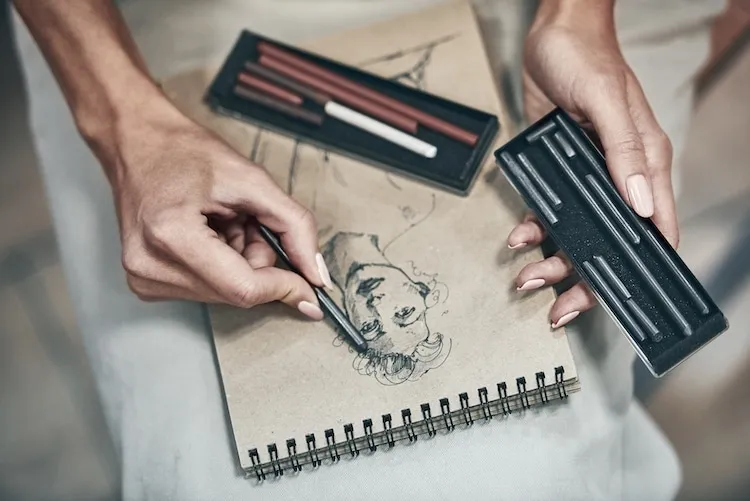Drawing Books: A Canvas for Creativity and Expression...!!!
Drawing books are versatile and essential tools that play a significant role in the artistic and personal lives of individuals. With diverse types, materials, and uses, they cater to a wide range of artistic needs and preferences.

Drawing books are indispensable for artists, hobbyists, students, and anyone keen to explore their creativity through sketching and drawing. These books act as a canvas for visual expression, enabling individuals to capture ideas, observations, and emotions through various forms of drawing.
History of Drawing Books
The origins of drawing books date back to ancient times, when artists and scholars documented their observations and ideas on papyrus, parchment, and other early forms of paper. During the Renaissance, sketchbooks became vital tools for artists like Leonardo da Vinci and Michelangelo, who used them to study anatomy, nature, and composition. These early sketchbooks were often hand-bound and included various media such as ink, charcoal, and graphite.
With the advent of mass-produced paper in the 19th century, drawing books became more accessible to the general public. This increased accessibility allowed aspiring artists, students, and hobbyists to experiment with drawing and sketching, leading to the widespread use of drawing books today.
Types of Drawing Books
Drawing books come in various types, each tailored to specific artistic needs and preferences:
-
Sketchbooks: The most common type of drawing books, characterized by blank pages meant for freehand drawing. Sketchbooks are available in various sizes, paper weights, and bindings, making them versatile for different artistic styles.
-
Grid and Dot Grid Books: These books feature pages with grids or dot grids, providing structure and guidance for artists requiring precision in their drawings. They are particularly useful for technical drawings, architectural sketches, and graphic design.
-
Watercolor Books: Designed for watercolor painting, these books have thick, textured paper that can withstand the application of water and pigment. They are ideal for artists who enjoy combining drawing and painting techniques.
-
Mixed Media Books: These contain paper that can handle various media, including ink, markers, acrylics, and pastels. Perfect for artists who like to experiment with different materials and techniques.
-
Toned Paper Books: Featuring pages in shades of gray, tan, or other colors, these books provide a unique background for drawings. They are popular among artists who enjoy working with white and dark media to create highlights and shadows.
-
Travel Sketchbooks: Compact and portable, designed for artists on the go. Ideal for capturing quick sketches and observations while traveling or during outdoor excursions.

Materials Used in Drawing Books
The quality and characteristics of drawing books are influenced by the materials used in their production:
-
Paper: Paper varies in weight, texture, and color. Common types include smooth paper for fine lines, rough paper for textured drawings, and heavyweight paper for mixed media and watercolor use.
-
Binding: Drawing books come in various bindings, such as spiral, stitched, and glued. Spiral-bound books lay flat when open, making them convenient for drawing, while stitched and glued bindings provide a more traditional appearance.
-
Cover: Covers can be hard or soft, offering protection for the pages. Hardcovers provide durability, while softcovers are more flexible and lightweight.
Uses and Benefits of Drawing Books
Drawing books offer numerous uses and benefits, making them valuable tools for both artists and non-artists:
-
Creative Expression: Provide a blank canvas for individuals to express creativity, emotions, and ideas through art. Encourage experimentation and exploration of different styles and techniques.
-
Skill Development: Regular use helps improve drawing skills, hand-eye coordination, and observation abilities. Provide a structured environment for practicing and refining artistic techniques.
-
Stress Relief: Drawing can be therapeutic, helping reduce stress and anxiety. The act of sketching and creating art promotes relaxation and mindfulness.
-
Documentation and Journaling: Serve as visual journals, allowing individuals to document experiences, travels, and daily life through sketches and illustrations. Become valuable records of personal growth and memories.
-
Professional Use: Essential tools for professional artists, designers, and illustrators for brainstorming, planning, and developing concepts. Provide space for preliminary sketches and ideas before finalizing projects.
In conclusion, drawing books are versatile and essential tools that play a significant role in the artistic and personal lives of individuals. With diverse types, materials, and uses, they cater to a wide range of artistic needs and preferences. Whether used for creative expression, skill development, stress relief, documentation, or professional work, drawing books offer a valuable platform for visual storytelling and exploration. As we continue to embrace creativity and self-expression, the importance of drawing books in our daily lives remains ever relevant.
What's Your Reaction?

















